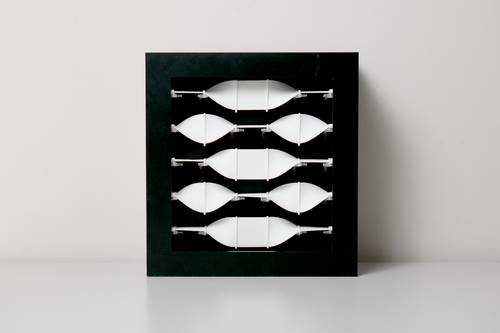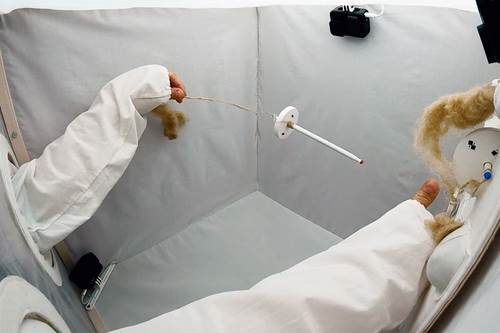Videos: SIGGRAPH 2023’s Time Tunnel and Art Gallery
While SIGGRAPH 2023 had entertaining and enlightening talks and panels focusing on computer graphics and technology, one thing that attendees look forward to every year are highly unique art installations in the art gallery every year. This year was no different, which you can see in our videos below, with a special installation near the art gallery celebrating the 50th anniversary of the organization.
The Time Tunnel
Celebrating the 50th SIGGRAPH conference, a new exhibit was introduced where attendees can literally surround themselves with the history of the organization celebrating innovations in computer graphics and interactive techniques.
This animated timeline highlights significant computer graphics and interactive technique-related achievements, innovations, creative breakthroughs, and other events since the first SIGGRAPH conference in 1974. There are eight different categories: Awards, Organizations, SIGGRAPH Accomplishments, Applications, Software and Hardware development, Animation and Art and Design. The 1500+ entries were added by a large group of pioneers, artists, SIGGRAPH volunteers, industry specialists, educators, and community members.
The entries were reportedly selected when the group collaborated during a series of “Timeline-a-thon" meetings and reached out to their communities for input. This timeline represents not only the diverse history of the field of computer graphics and interactive techniques, but also showcases the spirit of innovation and creativity of the people involved in this community. A highlight for attendees of the conference was calling out the films and projects that see whiz by, some of which some attendees even had a hand in working on.
The floor of the tunnel is made up of other exhibits, each interacting as attendees walk through. You can get an idea of the experience as we took a stroll through the tunnel in our video below.
Art Gallery
One of my favorite aspects of a SIGGRAPH conference is the art gallery, with highly conceptualized exhibits and displays of art-tech, with this year’s theme being “Time Capsules: Discovering the Undiscovered," consisting of compelling digital and technologically mediated artworks that reflect the idea of time capsules.
In our video below, you’ll see a number of these, including:
Hinemosu 30
Artist: Yuichiro KatsumotoThe Utsuroi LabTokyo Denki University
Humans draw lines to write letters and sketch pictures. Computers use dots, or pixels, to represent texts and graphics. If a computer controls a linear object, what kind of image would emerge? This is the motivation for this creation, and this time the focus is on flat linear objects as medium. Hinemosu 30 is a clock that displays motion graphics and kinetic typography by twisting five white elastic bands.
ReCollection
Artists: Weidi Zhang, Arizona State University and Rodger Luo, Autodesk Research
ReCollection is an interactive AI art installation that assembles synthetic collective memories based on language input, blurring the boundaries between remembrance and imagination through AI system design and interactive experimental visualization. We developed our AI system by fine-tuning a pre-trained, transformer-based AI model to learn the documentaries of Alzheimer patients’ visual memories and their descriptions. The system imagines new memories by interpreting real-time narratives from participants in the installation. It offers an artistic approach and future prototype for cultural heritage reproduction and re-imagination and explores the tensions in the co-relations between visual representations, language, and narratives.
Reinventing The Spindle
Artist: Ebru Kurbak, University of Applied Arts Vienna
Reinventing the Spindle is a LACMA Art + Technology Grant project, which explores textile-making in microgravity. The project tackles the politics of near-space exploration, questioning whose curiosity has been satisfied and whose knowledge has been marginalized. Inspired by the fact that flax (Linum usitatissimum) was one of the first plants grown in space back in 1971, the artist conducted experiments fifty years later with hand-spinning flax fibers in weightlessness, building on knowledge derived from women's, indigenous, and nomadic cultures. The installation features the first piece of yarn hand-spun in microgravity and a video re-enactment, highlighting weightlessness as a global commodity and commons.




